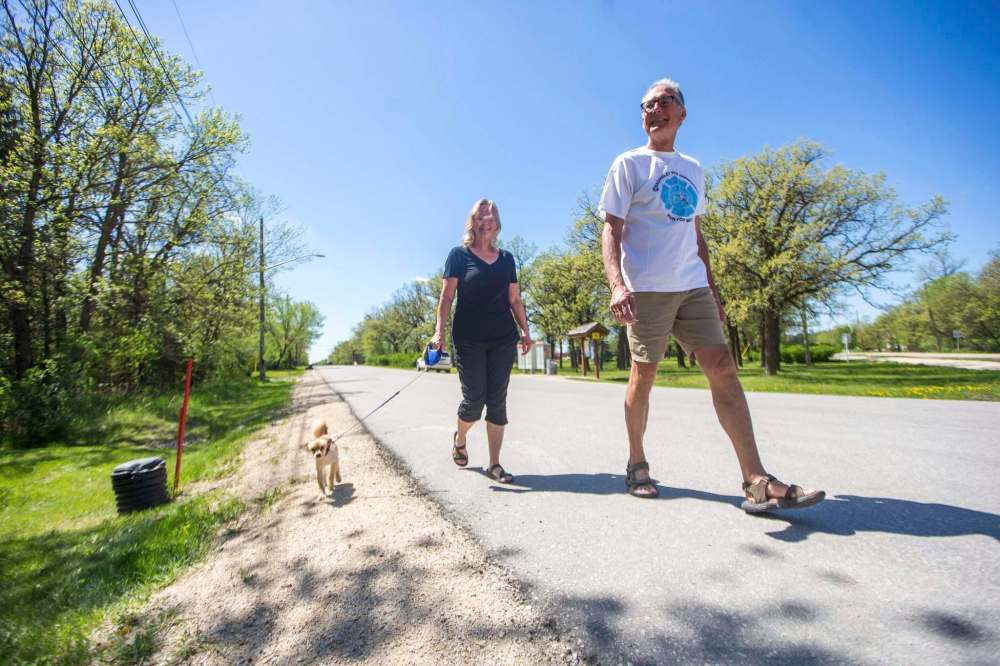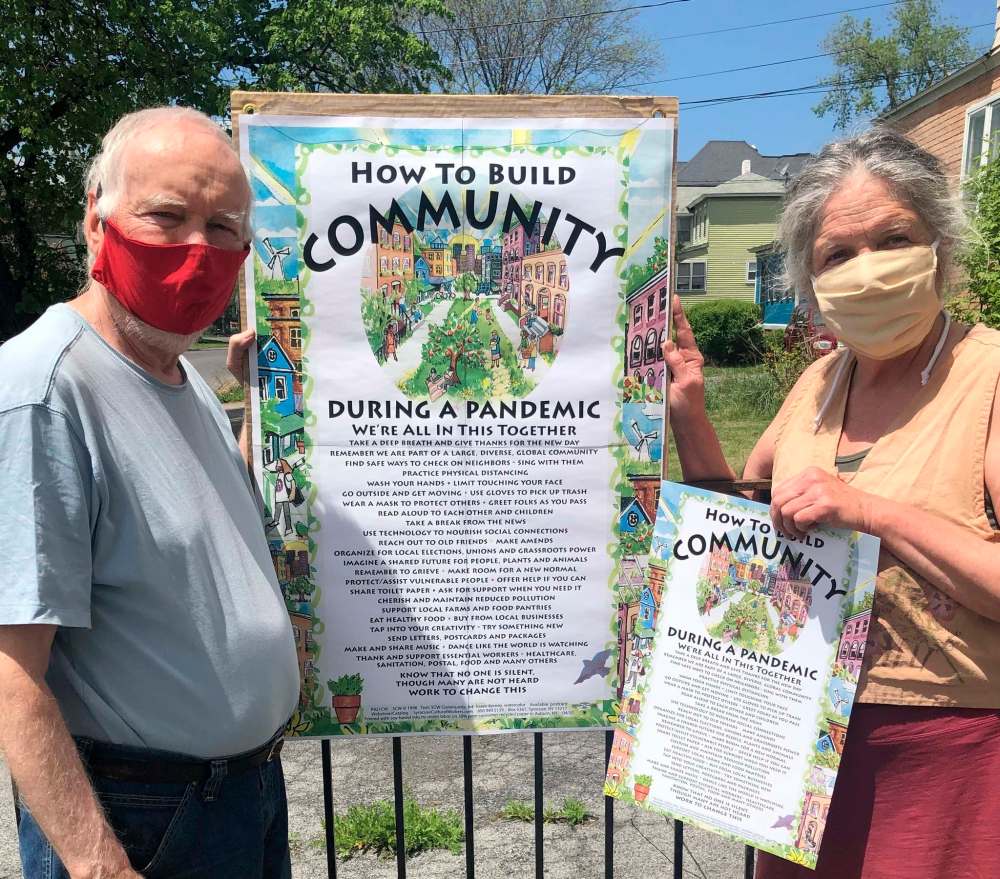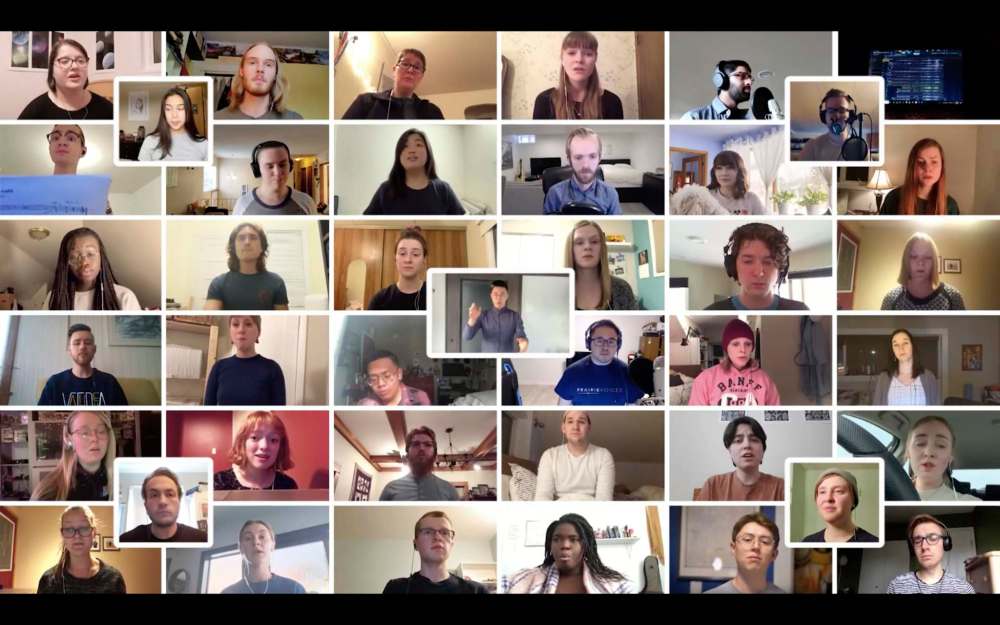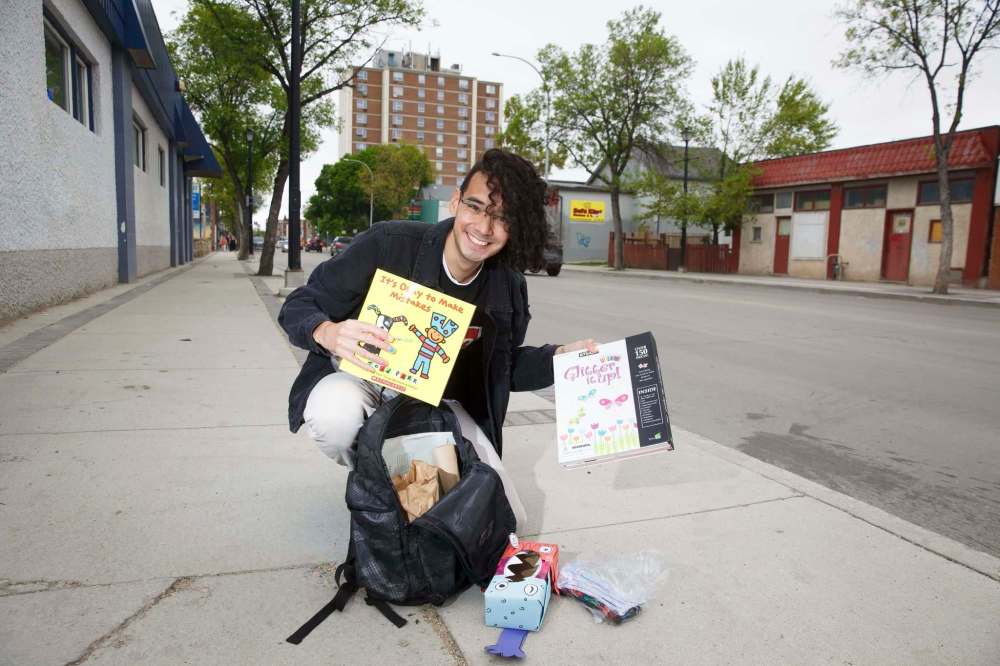Life after a pandemic
Rebuilding after lockdown gives society chance to do better, activists argue
Advertisement
Read this article for free:
or
Already have an account? Log in here »
To continue reading, please subscribe:
Monthly Digital Subscription
$1 per week for 24 weeks*
- Enjoy unlimited reading on winnipegfreepress.com
- Read the E-Edition, our digital replica newspaper
- Access News Break, our award-winning app
- Play interactive puzzles
*Billed as $4.00 plus GST every four weeks. After 24 weeks, price increases to the regular rate of $19.00 plus GST every four weeks. Offer available to new and qualified returning subscribers only. Cancel any time.
Monthly Digital Subscription
$4.75/week*
- Enjoy unlimited reading on winnipegfreepress.com
- Read the E-Edition, our digital replica newspaper
- Access News Break, our award-winning app
- Play interactive puzzles
*Billed as $19 plus GST every four weeks. Cancel any time.
To continue reading, please subscribe:
Add Free Press access to your Brandon Sun subscription for only an additional
$1 for the first 4 weeks*
*Your next subscription payment will increase by $1.00 and you will be charged $16.99 plus GST for four weeks. After four weeks, your payment will increase to $23.99 plus GST every four weeks.
Read unlimited articles for free today:
or
Already have an account? Log in here »
Hey there, time traveller!
This article was published 31/05/2020 (1979 days ago), so information in it may no longer be current.
Whether reaching out to old friends, singing with neighbours, or offering help where you can, small actions can build and strengthen connections with each other, especially during the pandemic, says the publisher of a popular poster on building community.
“We think (community) is an important component in creating a society that respects everyone, has enough to eat, has access to health care,” says Dik Cool of Syracuse Cultural Workers.
“In the present, it also makes people’s lives more enjoyable.”

Syracuse Cultural Workers is a publishing company based in Syracuse, N.Y., which creates and publishes calendars, posters, cards and T-shirts on themes of peace, sustainability, and social justice.
Cool and his colleagues adapted their popular “How to Build Community” poster, first released in 1998, to adapt to the uncertain and unprecedented situation created by the COVID-19 pandemic and resulting economic shutdown.
Titled How to Build Community During a Pandemic, the downloadable poster lists nearly three dozen short directives, from the mundane “share toilet paper” and “wash your hands” to the more existential suggestions such as “imagine a shared future for people, plants and animals,” or “remember to grieve” and “make room for a new normal.” The poster also encourages people to do more practical things like making and sharing music, using technology to connect with people, and asking for help or offering assistance.
Listen for yourself
● Listen to Prairie Voices’ virtual choral performances at http://wfp.to/3f3
● There’s still time to participate in Run for Wishes by checking out http://wfp.to/3fh
● Download the How to Build Community During a Pandemic poster at http://wfp.to/3fD
With modified graphics — the people on the poster are physically distanced and wearing masks — and the same typeface as the company’s original poster, the new edition is available for free download to print on a letter-sized paper.
Released at the end of April, sales of the design number about 200 for the larger poster and 3,500 for the postcard size.
The original poster, written collectively by staff and illustrated by art director Karen Kerney, has sold about 500,000 copies in multiple formats and languages, says Cool.
We’ve taken some of the directives from the poster and found our own home-grown examples.
● ● ●
Make and share music

Just days into pandemic shutdown, Winnipeg conductor Geung Kroeker-Lee orchestrated a way to keep his choir singing together.
Instead of the concert they had planned for the end of March, 40 of the 50 members of Prairie Voices, a choir for young adults, recorded themselves singing in their own homes to the sound of a piano accompaniment and the sight of Kroeker-Lee conducting.
“It’s a very labour-intensive project,” he says of editing the video and audio tracks into a cohesive, split screen track and then posting it on YouTube.
“Choir is the one thing that become challenging for so many reasons.”
Determined to keep his choir members on the same page, the public school music teacher now leads weekly video conferences to keep people connected and to explore new ways to share music when singing together as a large group isn’t possible.
Kroeker-Lee has experimented with muting everyone on a video conference call while he sings a choral piece and inviting choir members to sing along with him from their homes.
“I give them the reminder they can sing with me and they have at least one voice to sing with.”
● ● ●
Go out and get moving
For Headingley resident Glenn Reimer, getting outside and moving this year meant rethinking and revising the 20th annual Run for Wishes sponsored by the Headingley Fire Department, an event he’s organized for the past 18 years.
Now a month-long virtual event throughout May where runners, cyclists and walkers register their proof of participation through social media, Reimer says the excitement and energy of having 300 participants on the same course at the same time can’t be replicated, but he’s witnessed some unexpected benefits.
“The feedback I’ve been get is this it a way to still participate,” says Reimer, a retired elementary school teacher who now serves as deputy chief for emergency medical services for the fire department.
“Families have entered and we have people from out-of-province entering as well.”
Encouraging people to get outside and moving will also raise money for several local charities through sponsorships and race registrations, says Reimer, a retired runner who now finds himself hitting the local trails for long walks with his wife and dog.
“I’m seeing a huge number of walkers I’ve never seen before,” he says. “I’ve certainly upped my walking.”
● ● ●
Connect

Read aloud to each other and children: Send letters, postcards and packages
During the pandemic shutdown, community advocate and public speaker Michael Redhead Champagne walks throughout the neighbourhood with a new purpose.
Knowing many of his North End neighbours are homeschooling their kids without the benefit of public libraries, he’s become a travelling library and art store, passing on donated books and craft supplies and squeezing in a little social distanced visit at the same time.
“I feel like books can save people’s lives,” says Champagne. “I feel like during a pandemic I can give books.”
● ● ●
Empathize
“Know that no one is silent, though many are not heard. Work to change that.”
Although most of the advice on the posters is practical, the pandemic poster by Syracuse Cultural Workers ends with this political message (above) repeated from the original 1998 version.
That sentiment was reprinted in response to systemic discrimination and racism in the United States, says Andy Mager, who bears the dual titles of sales manager and social moments liaison for Syracuse Cultural Workers.
“Inequality has played more powerfully during the pandemic,” says Mager, adding that even physical distancing and wearing masks is controversial in his country.
Applauding the sentiment on the newly released poster, Kate Kehler of Social Planning Council of Winnipeg points out picturing only people in masks creates another inequity for people who can’t afford — or find — disposable masks or don’t have laundry facilities to wash and reuse a cloth mask.
“We’re in such heightened times right now and everyone is very sensitive,” she says.
‘One thing that’s become visible, as a society we’ve been able to disperse resourcesto people in need. If it’s possible duringa pandemic, it’s always possible’– Michael Redhead Champagne, community advocate
After living more than two months into the pandemic reality, Kehler says many of the items on the list should already be common sense.
“These shouldn’t be new to us. These should be things we’re doing all the time in looking after each other,” she says.
“If we had a more equitable society going into this, the impact wouldn’t have been so severe.”
Champagne agrees that the pandemic has exposed fault lines in Winnipeg, but the shutdown has also demonstrated that governments can react quickly to solve problems if they are motivated.
“One thing that’s become visible, as a society we’ve been able to disperse resources to people in need,” Champagne says. “If it’s possible during a pandemic, it’s always possible.”
That possibility for change encouraged Mager, Cool and others in their company to develop suggestions for community-building that would continue beyond the pandemic, such as connecting with others, supporting local farmers and businesses, and remembering that we’re in this together.
“One of the things we tried (to convey) in the new text is the idea that many people are saying ‘I can’t wait to get back to normal,’” says Mager. “The old normal wasn’t good.”
brenda@suderman.com


Brenda Suderman has been a columnist in the Saturday paper since 2000, first writing about family entertainment, and about faith and religion since 2006.
Our newsroom depends on a growing audience of readers to power our journalism. If you are not a paid reader, please consider becoming a subscriber.
Our newsroom depends on its audience of readers to power our journalism. Thank you for your support.

